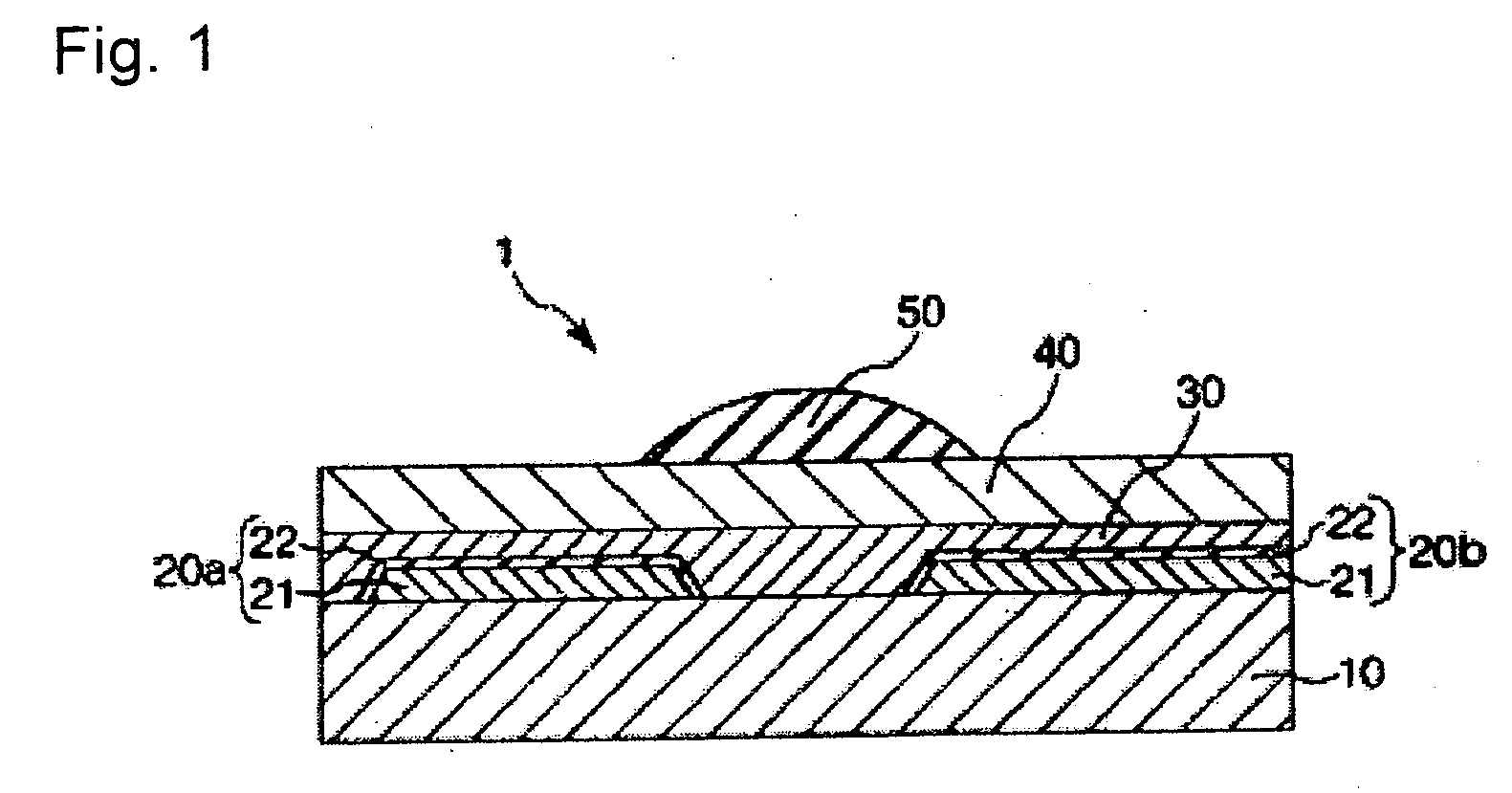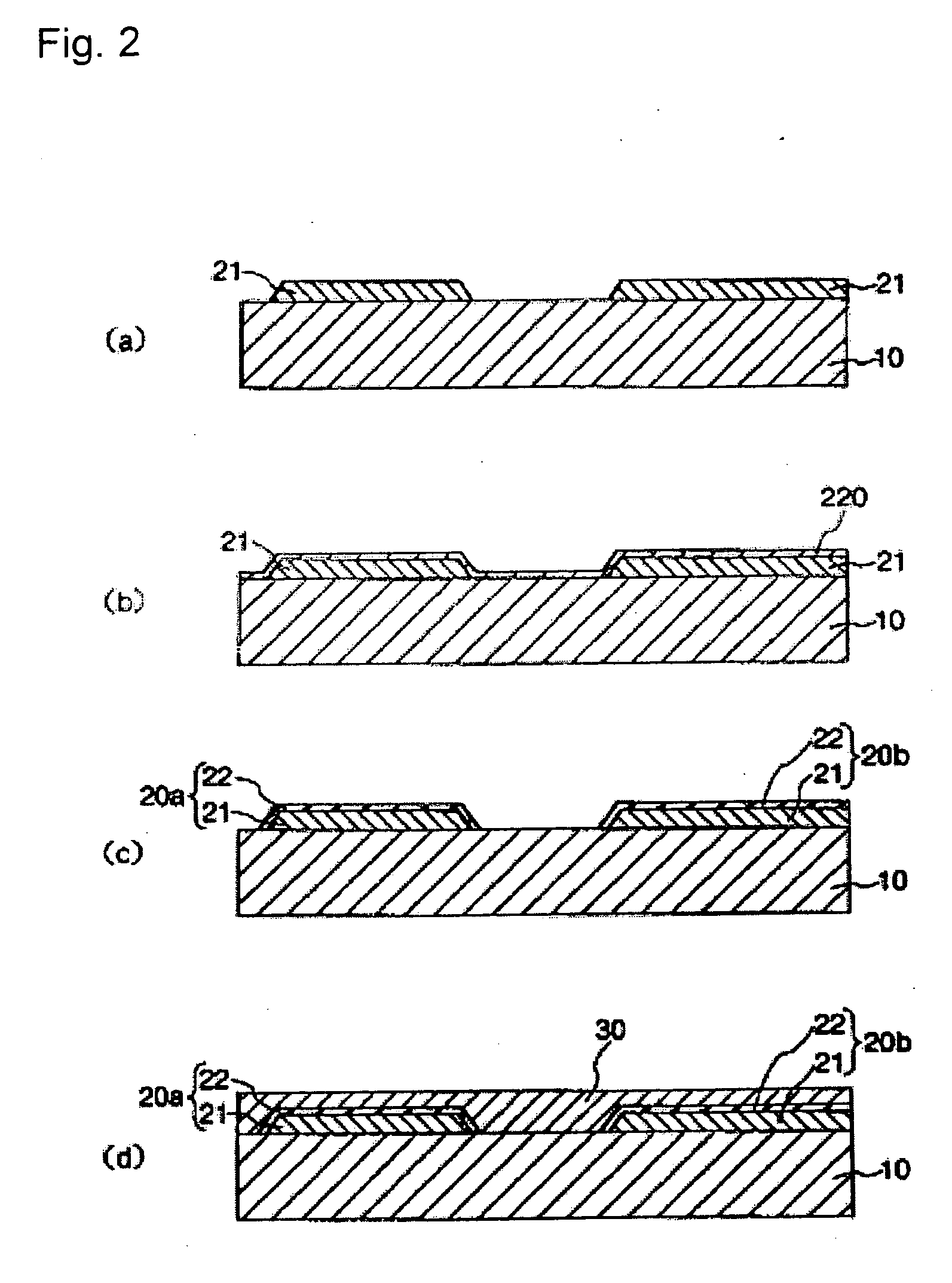Electrode, method for forming an electrode, thin-film transistor, electronic circuit, organic electroluminescent element, display, and electronic equipment
a thin-film transistor and electrode technology, applied in the direction of thermionic cathodes, discharge tubes/lamp details, discharge tubes luminescnet screens, etc., can solve the problems of low efficiency in injecting carriers (holes), lowering transistor properties, and reducing the efficiency of transistors, so as to enhance the property (switching property) of the thin-film transistor. , the effect of high reliability
- Summary
- Abstract
- Description
- Claims
- Application Information
AI Technical Summary
Benefits of technology
Problems solved by technology
Method used
Image
Examples
examples
[0189] Specific examples of exemplary aspects of the present invention will now be described.
[0190] A1. Manufacturing a Thin-Film Transistor
example a1
[0191] First, a glass substrate (OA10, made of NEC, Corning) was prepared and cleaned with ethanol so as to degrease its surface.
[0192] After being dried, the glass substrate was immersed in concentrated sulfuric acid so as to have a rough surface. This way, a plating film to be formed in the following step can have increased adhesiveness. Then, the glass substrate was washed with pure water. Next, a cycle of immersing the glass substrate in a sensitivity increasing liquid for 15 seconds and the washing the substrate with pure water was repeated four times. As the sensitivity increasing liquid, a solution (tin chloride (II) solution) of 37 wt % concentrated hydrochloric acid (1 mL / L) and SnCl2 (1 g / L) was used.
[0193] Subsequently, the glass substrate was immersed in a Ni plating bath for five minutes. The conditions of the Ni plating bath are as follows:
[0194] Sodium hypophosphite solution: 0.15 mol / L
[0195] Ammonium sulfate solution: 0.50 mol / L
[0196] Sodium acid citrate solutio...
example a2
[0209] A glass substrate was immersed in a 0.1 wt % nickel chloride solution to which dimethylborane as a reducer had been added at 40 degrees centigrade for five minutes, so as to form a Ni plating film. With the other steps being similar to the example A1, a thin-film transistor was completed. The average thickness of the Ni plating film was 100 nm.
PUM
 Login to View More
Login to View More Abstract
Description
Claims
Application Information
 Login to View More
Login to View More - R&D
- Intellectual Property
- Life Sciences
- Materials
- Tech Scout
- Unparalleled Data Quality
- Higher Quality Content
- 60% Fewer Hallucinations
Browse by: Latest US Patents, China's latest patents, Technical Efficacy Thesaurus, Application Domain, Technology Topic, Popular Technical Reports.
© 2025 PatSnap. All rights reserved.Legal|Privacy policy|Modern Slavery Act Transparency Statement|Sitemap|About US| Contact US: help@patsnap.com



